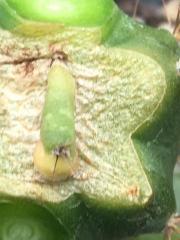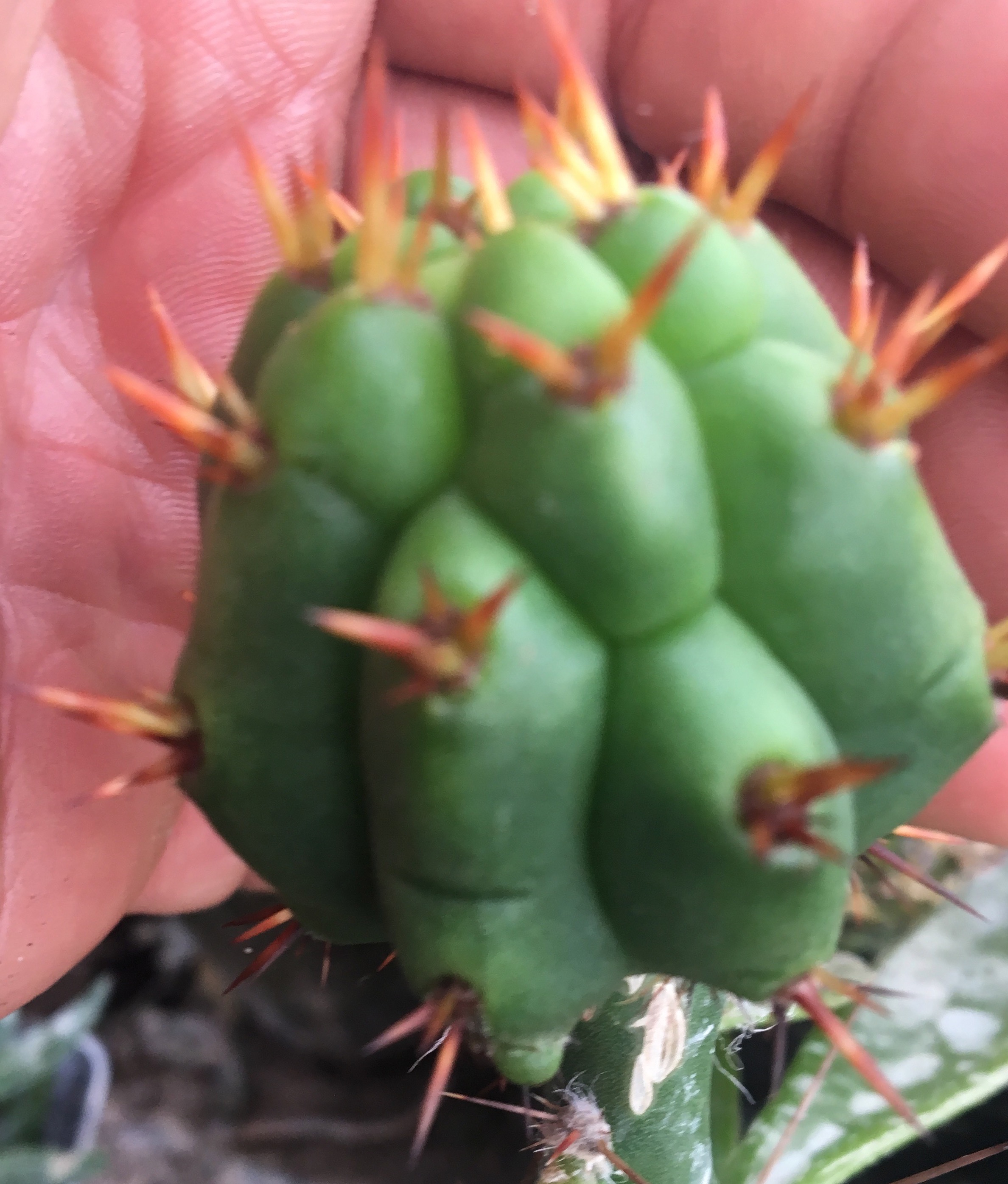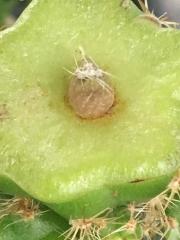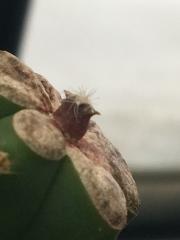-
Content count
1,233 -
Joined
-
Last visited
-
Days Won
44
Content Type
Profiles
Forums
Calendar
Blogs
Gallery
Store
Everything posted by Inyan
-

5a8354196524f_TrichocereusscopulicolaxT.terscheckii67.jpg
Inyan commented on Inyan's gallery image in Cacti & Succulents
-

Trichocereus scopulicola xT. terscheckii 469.jpg
Inyan commented on Inyan's gallery image in Cacti & Succulents
- 3 comments
-
- trichocereus
- graft
-
(and 5 more)
Tagged with:
-
http://www.berkeleywellness.com/healthy-mind/mood/article/will-psychedelic-drugs-soon-be-legal
-
If evolution is real, then how come we don't have chimps giving birth to men today? Where are the missing links? Where are the so called crockoducks?Has anyone ever seen a bull-sheep?
-
The tip or apical growth is where you should Bap it if no visible areoles are present.
-
Just like to add that not rubbing off that bottom node and burying that node will create a stronger plant if you can get so lucky as to have that buried node grow to produce a vine. I've done this many times as I'm sure many others have when they bury a section of vine as many do when they live in an area where their vine may experience short freezing weather. Those buried nodes whether from a cut section or from a buried section will come back much faster and stronger than those nodes above the surface. Pipe heating tape and insulation might be an idea for those that are really adamant about growing larger vines in areas where it freezes. I don't know if anyone has experimented with that to any great degree, but where there is a will I'm sure there is a way.
-
-
What if this is not the argument... and this is really the answer?
-
On the subject of albino or yellow runts as you say, I've taken yellow pups from variegated cacti and grafted them to normal variegated specimens and had them green up as well where there counterpart variegated specimens stayed variegated. I've also seen what appears to be completely yellow specimens in my collectiong slowly turn green as well when grafted, so if you have an interesting cross it is definitely worth while salvaging those that may not show any visible chlorophyl by grafting them. Who knows, your specimen may turn into a healthy robust specimen capable of growing on its own if you only saved it by grafting it first. On the subject of upside down grafted seedlings, it goes without saying or it should, that a seedling must be large enough to allow you to keep some areoles on both halves if your going to grow both halves and push the areoles on both to produce new cacti. No areoles on a graft is a good way to ensure no pups. My own personal philosophy on grafting seedlings and picking them... I go for those that are freakish if I see them first. 4 seed leaves get grafted before two seed leaves (cotyledons). 3 cotyledons will get grafted before 2 cotyledons. Variegates and albino get grafted before those that lack any visible variegation. Depending on what I expect or want... I also try to graft a few of the fattest plumpest seedlings I can next.Especially so if it is a terscheckii cross or something known to produce fat seedlings. Other traits are picked as well such as the seedlings with the largest spines or those with the smallest spines, but those sort of traits are picked on older second round seedlings that will get grafted. Lastly, if the cross is very rare or is known to only throw a few seedlings I might simply graft each and every one of those seedlings to give them an advantage as it is entirely possible to graft a seedling and have it grow a full foot in a single year. Especially so if you can graft a two week old seedling to a nice tall tall Trichocereus that already has several feet of growth under its belt.
-
https://www.researchgate.net/profile/Jaap_Tuyl/publication/40145945_Methods_for_overcoming_interspecific_crossing_barriers/links/00b4951ef66b9c2d53000000.pdf For some useful information on overcoming pollination barriers in F1 crosses. Check out the above.
- 6 replies
-
- scopulicola
- huarazensis
-
(and 2 more)
Tagged with:
-
The weather is warming up and now things are taking off. Thankfully, I have the answer to everything 42 courtesy of Zelly. A superb Huarazensis x Trichocereus scopulicola cross.
- 6 replies
-
- 4
-

-
- scopulicola
- huarazensis
-
(and 2 more)
Tagged with:
-
The longer flower pistil could indeed affect the pollens ability to travel down the pistil as the pollen may only be able to grow so far. In some plants, that type of incompatibility is bypassed by cutting the stigma to the same length as the parent with with the shortest pistil. The pollen is then applied directly to that cut surface. I'd certainly be interested in seeing the anthers under a magnifying glass. Centrifuging the anthers and collecting what little might be had may or may not be able to yield you enough viable pollen over a larger window of time to enable a successful pollination and perhaps some viable seed. I've created many hybrid seed pods where the ovules aborted long before the pod matured. So, I understand a little about your frustration with this hybrid. I'd certainly not rule out the ability to set seeds with one of these hybrids till I tried a few more tricks. Another suggestion that may or may not help would of course be to pollinate the cut pistil early before the flower has opened by making a small slice into the flower with a razor blade prior to its opening. You have nothing to lose and everything to gain by such a tactic. Pollinating a flower early like this allows the pollen a longer window to grow down the pistil. I also would not rule out pollen being able to be retrieved until I had looked at the anthers under a microscope. With all of that said, it certainly does sound like you may have some marked reduced fertility to this particular hybrid. The hope is of course that you can find the right trick to get even a single pod to form. With some hybrids... even having the temperature too elevated during pollen germination can cause the pod to abort. One reason some hybridizers use shade cloths over their plants during peak flower production in the heat of the summer. Hybrids can be much more fickle than their non hybrid counterparts to say the least. In the end, it may simply be a dead end, but I sure am hoping it is not as it is one beautiful specimen you have created Zelly. I am proud to be growing the few hybrids I am of yours as I know many others here are as well.
- 6 replies
-
- scopulicola
- huarazensis
-
(and 2 more)
Tagged with:
-
http://ocean.si.edu/ocean-acidification You don't have to be a rocket scientist, but you might want to listen to the scientists. That is of course unless your name is Mr. Trump aka the Great Orange Anus.
-
https://sealevel.nasa.gov
-
I've got a whole tray grafted as you can see of this cross of yours Zelly. I like the fact that it only took 2-3 years to get flowers on this cross and it looks like those were all grown on their own roots... so a plus if I'm not mistaken. Early blooming genetics. The one up front is the most spectacular of the cross in my possession so far and thus I highlighted it. Now, if it turns out be even partially fertile I'll be in cacti heaven. Although, it is not totally uncommon for hybrids to lose some fertility one way or the other. In your case Zelly, it looks like your particular hybrid was not very pod fertile the first go round. My question would be... was it pollen fertile? Did you get a chance to test that pollen out on another species or hybrid? Either way, I'd like to see the next generation of this particular hybrid. Thinking I should de-graft now and graft onto something bigger to push this little one a lot faster.
- 6 replies
-
- scopulicola
- huarazensis
-
(and 2 more)
Tagged with:
-
Sweet cacti and sweet first post.
-
Still growing these cacti in the bog like a boss.
-
My winter fertilizer for my cacti. This is how I do it. First, I mix my fertilizers in a bucket. I like to get a nice muddy green color going. Next, I break that fertilizer up into portions I can soak my babies into like so.Color is important to me. I like to have my cacti sitting in a fertilizer such as this for a few hours during the winter months. With bog-ponics I feel it helps keep up a nice healthy algae mat in the bin they are in if they get a nice healthy dose of liquid fertilizer ever so often. Every so often I can scrap up the algae dry it and then recycle it for fertilizer. Its a win win.
-
-
Y'all fools better recognize. And nobody can say we didn't get what we deserve. This man is genius. Making Merica Great Again!
-

Indecisive Virgin of the Graft
Inyan replied to ☽Ţ ҉ĥϋηϠ₡яღ☯ॐ€ðяئॐ♡Pϟiℓℴϟℴ's topic in Cacti & Succulents
Found this how to graft video for your perusal. I've actually used this method and while it works... I'm still a sucker for parafilm versus tape. Simply put, anywhere you see tape being used in a graft.... substitute parafilm and things will be ohh so much better. -

Cactus of the month year day thread? Which cactus is really shining for you right now?
Inyan replied to ☽Ţ ҉ĥϋηϠ₡яღ☯ॐ€ðяئॐ♡Pϟiℓℴϟℴ's topic in Cacti & Succulents
Trichocereus peruvianus "Clyde" x Zelly is perhaps my favorite new eye candy. Picture taken today. -

Hey, Anyone have any Non-PC pachanoi pups available?
Inyan replied to ElectricDawn's question in Cactus & Succulent Identification
If you grew your specimen from a seed then you can be sure it is not a clone. However, if you received your specimen as a cutting then it may or may not be PC. Phenotypes can be shared just as you may have blue eyes and one, both, or none of your parents may have blue eyes. The bottom line is that without DNA testing to ensure you have an exact match phenotypes can be misleading as what you see does is not the genotype, but instead what you see is simply physical characteristics that can be shared. Think of it like PC being a particular St.Bernard for instance. So, we have P.C. St. Bernard. You may have many other look alike that may be different on the inside, but on the outside... they are still St. Bernards. All PC St. Bernards are St. Bernards, but not all St. Bernards are PC. Now, think of all other pachanoi as other dog breeds. First generation crosses often have traits from both parents, but they may be heavier in some traits than others i.e. one parent may have more dominant traits. Still, a more complex cross like an F1 aka sibling cross can result in an F2 generation where some seedlings will look like PC, others will still be a mixture of both parental phenotypes, and still others will more closely resemble the other parent. To complicate matters crossing that F1 that most resembles the PC parent back to the PC parent can increase that type of phenotype. Or one could simply do a backcross to another Trichocereus that had the PC look and lock in that PC phenotype that way as well. So while cacti can share a similar phenotype or appearance on the outside. Internally they may differ quite a lot. Remember, a hybrid may hide its hybrid ancestry or it may show distinctly what its ancestry is. Complex hybrids can be even harder to figure out especially so if the hybridizer has selected for a specific look generation after generation. When you look at the hybrids created with Hemerocallis for instance you are often looking at many different species and many different crosses all rolled into one. The idea of course being to select the best genes to produce the most unique or best phenotype over many generations. One thing is for certain, if your PC blooms and it has a pink or orange flower... it is a hybrid and not a PC. To confuse matters more, sometimes phenotype can change slightly due to different growing conditions or environments. The bottom line as I see it though is no one can truly tell if you have a clone or a seed grown cultivar if that phenotype matches up sufficiently with another specimen already in wide circulation. Breeding back to the same parent 3 times for instance would severely lock in that particular phenotype of the one parent resulting in many look a likes.


